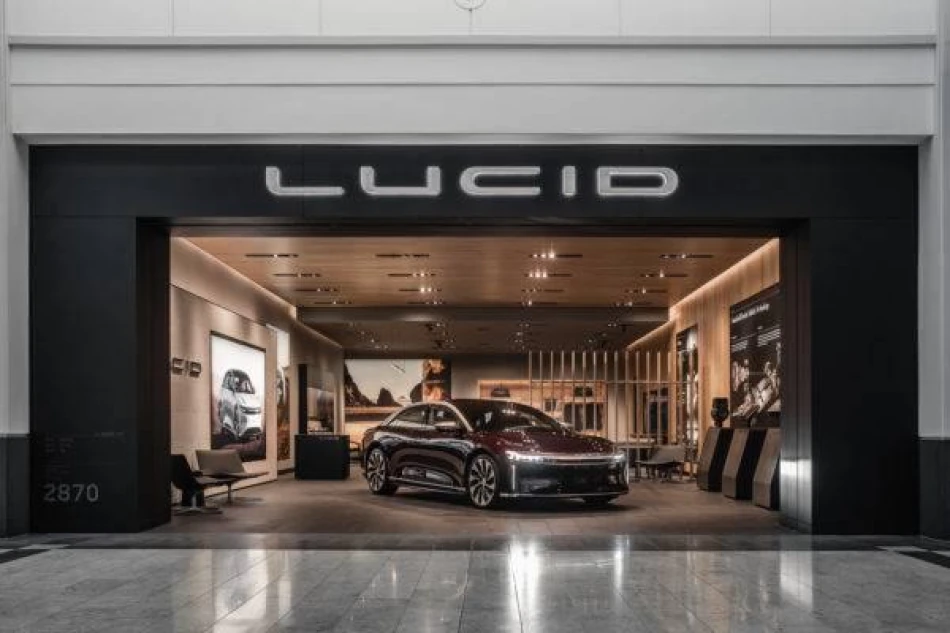
Uber and Lucid Partner on Self-Driving Taxis, Boosting Lucid's Stock Price by 40%
Uber's $300 Million Bet Signals Robotaxi Revival After Years of Broken Promises
Uber is making a bold $300 million investment in struggling electric vehicle maker Lucid Motors as part of a strategic partnership to launch autonomous taxi services in a major U.S. city by late 2025. The deal, which sent Lucid's stock soaring over 40%, represents a significant revival of robotaxi ambitions after years of industry setbacks and highlights Uber's determination to control the future of ride-hailing rather than be disrupted by it.
The Partnership Details: 20,000 Autonomous SUVs by 2032
Under the six-year agreement beginning in 2026, Uber will purchase and deploy more than 20,000 Lucid Gravity electric SUVs equipped with autonomous driving technology from startup Nuro. The vehicles will be specifically configured for robotaxi operations, marking one of the largest announced autonomous vehicle deployments in the industry's history.
Lucid's stock jumped to $3.22 in pre-market trading following the announcement, providing much-needed momentum for the company that has struggled with production challenges and market acceptance. The EV maker also announced a 1-for-10 reverse stock split, a move typically used to boost share prices that have fallen significantly.
Why This Time Could Be Different
The robotaxi sector has been littered with overpromises and underdelivery. Companies like Cruise faced regulatory shutdowns, while others burned through billions with limited commercial success. However, several factors suggest this partnership might have better prospects than previous attempts.
Proven Technology Partners
Unlike earlier ventures that relied on unproven technology, this partnership combines Uber's operational expertise with Lucid's premium EV manufacturing and Nuro's focused autonomous driving systems. Nuro has already secured regulatory approval for autonomous delivery vehicles, giving it practical experience with safety requirements and regulatory compliance.
Market Timing and Competition
The announcement comes as Tesla accelerates its own robotaxi plans and Alphabet's Waymo expands commercial operations in cities like Phoenix and San Francisco. Uber's move appears designed to prevent these competitors from capturing the autonomous ride-hailing market that could eventually threaten Uber's driver-dependent business model.
Financial Implications for All Parties
For Uber, the $300 million investment represents a strategic hedge against technological disruption. Rather than risk being displaced by autonomous vehicle companies, Uber is positioning itself as the platform through which self-driving cars reach consumers. This approach mirrors how the company has expanded into food delivery and freight to diversify beyond traditional ride-hailing.
Lucid Motors desperately needed this partnership. The company has faced production delays and weak demand for its luxury sedans, leading to significant stock declines. The Uber deal provides both immediate capital and a guaranteed customer for its upcoming Gravity SUV, potentially stabilizing the company's finances.
Regulatory and Operational Challenges Ahead
Despite the optimistic timeline, significant hurdles remain. Autonomous vehicle regulations vary widely across U.S. cities, and securing permits for commercial robotaxi operations requires extensive safety testing and documentation. The partnership will need to demonstrate that their vehicles can safely navigate complex urban environments without human oversight.
The choice of launch city will be crucial. Cities like Austin, Phoenix, and Miami have shown greater regulatory flexibility toward autonomous vehicles compared to more restrictive markets like New York or Los Angeles. Success in the initial market will determine how quickly the partnership can expand to other cities.
Industry Implications: The Robotaxi Race Intensifies
This partnership signals a new phase in autonomous vehicle development, where established ride-hailing companies are taking direct control rather than waiting for technology companies to disrupt them. The scale of Uber's commitment—20,000 vehicles over six years—suggests the company believes autonomous technology has finally matured enough for commercial deployment.
For investors, the deal represents both opportunity and risk. Success could validate the massive investments in autonomous driving technology and create new revenue streams for all partners. Failure, however, could further damage confidence in the sector and lead to additional consolidation among struggling EV manufacturers.
The partnership's success will likely influence how other mobility companies approach autonomous vehicle adoption, potentially accelerating industry-wide transformation or highlighting the continued challenges facing fully autonomous transportation.
 Omar Rahman
Omar Rahman







